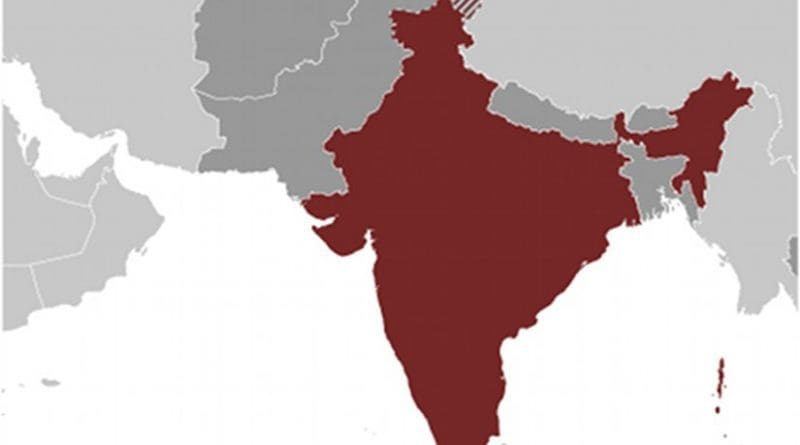Indian Inclination Towards Uranium Ores – OpEd
Indian aspirations of uranium treasury could be best seen in the statement made by Prime Minister Narendra Modi who described uranium as “not just a mineral but an article of faith for India.” The on-going uranium sales to India is at its peak since 2005 right after the US announced its budding strategic partnership with India. The US called India as its like-minded, best strategic partner and granted it an immensely gigantic uranium deal by paying all the prices whether it comes amend its domestic laws or requesting waiver from the export control cartel, NSG. Ever since then, India went for similar deals with Australia, Kazakhstan, France and many other countries.
Palpably, Tony Abbott signed the agreement to make Australia a “long-term, reliable supplier of uranium to India” in New Delhi. Article six of the treaty grants India unprecedented open-ended “reprocessing consent”, which could leave Australia without a say in how the nuclear material it shipped to India was used. Ironically, when uranium is used to generate electricity, weapons-grade plutonium can be recovered as a byproduct and “reprocessed” to create more energy or to produce nuclear weapons.
Since the treaty permits India to reprocess Australian uranium provided it does so in a US-approved facility. But Carlson, now a fellow at the Lowy Institute, said the US deal with India did not specify how the resulting plutonium should be managed. Similarly, he showed skepticism over the use of plutonium by this deal too.
Indian uranium deals with Kazakhstan and Australia. It imports around 40 per cent of its requirement — between 2008 and 2014, imports of uranium totaled 4,458 metric tonnes, 2,058 MT of which came from Russia’s Tvel Corporation, 2,100 MT from NAC Kazatomprom of Kazakhstan and 300 MT from Areva of France.
It is not possible to exactly identify how much uranium does India produces. Ironically, Indian government has never released fixed or exact data on local uranium production, but it is estimated to be around 350-400 MT. Total Indian reserves are estimated at 181,600 MT, mainly in Andhra Pradesh, Jharkhand and Meghalaya.
Acknowledging the fact that India is inclined towards uranium usage day by day, India has 21 operational nuclear reactors and six under construction, which use uranium as fuel. The nuclear component of India’s energy production is currently under 3 per cent at 6,000 MW. By 2032, India expects to have 45,000 MW of nuclear capacity, provided it has assured uranium fuel supplies.
India is believed to have stores of up to 110 warheads. A 2012 report by India’s auditor-general facilities were under-resourced and poorly regulated. When such facilities would be kept open-ended without any check and balance upon them, it is obvious that they would be subject of miss use and miss handled. The truth is written very openly in one of the clauses of the 123 agreement that the by-product material shall not be subject to safeguards or any other form of verification under this Agreement, unless it has been decided otherwise by prior mutual agreement in writing between the two Parties. Factually, India is getting Uranium and its indigenous PHWR plants are now able to run on full capacity. Also, India is in a position to set up many more of the 700 MWe indigenous units … 4 are already under construction, and 12 more under advanced stages of planning. Given that India is estimated to possess reserves of about 80,000–112,369 tons of uranium, India has more than enough fissile material to supply its nuclear weapons program, even if it restricted Plutonium production to only 8 of the country’s 17 current reactors, and then further restricted Plutonium production to only 1/4 of the fuel core of these reactors.
According to the calculations of one of the key advisers to the US Nuclear deal negotiating team, Ashley Tellis: operating India’s eight unsafeguarded PHWRs in such a [conservative] regime would bequeath New Delhi with some 12,135–13,370 kilograms of weapons-grade plutonium, which is sufficient to produce between 2,023–2,228 nuclear weapons over and above those already existing in the Indian arsenal. Although no Indian analyst, let alone a policy maker, has ever advocated any nuclear inventory that even remotely approximates such numbers, this heuristic exercise confirms that New Delhi has the capability to produce a gigantic nuclear arsenal while subsisting well within the lowest estimates of its known uranium reserves.
This growing inclination towards uranium reservations and increasing disastrous and advanced level weaponry would adversary impact the regional security architecture and strategic stability concerns. Keeping the above mentioned clues, it is not only India behind this entire catastrophe; it is in effect a part of a colossal plan of the entire power seeking community.


Re: “..be subject of miss use and miss handled.” Rest-assured, never’miss Altaf-ed’!